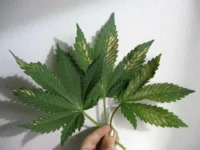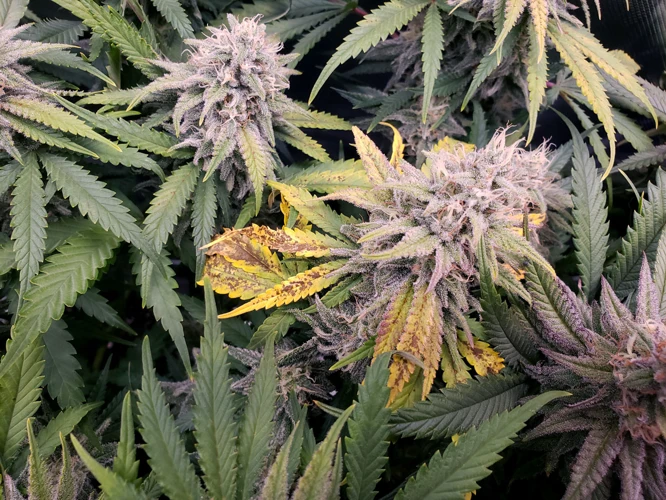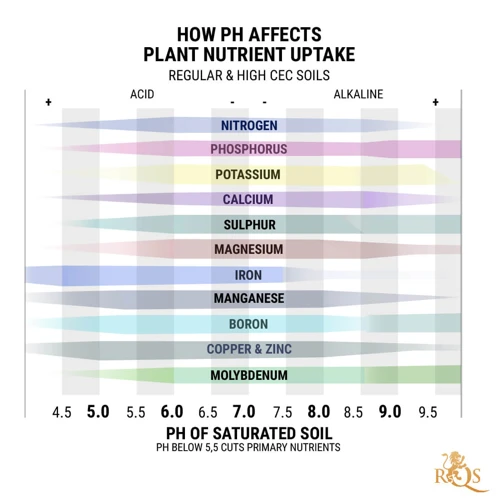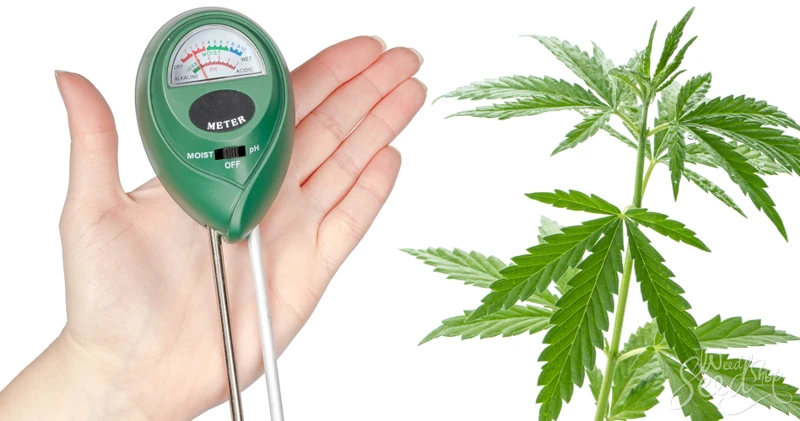
Understanding the Effects of pH Levels on Your Cannabis Plants
Every plant grower knows that maintaining proper pH levels is crucial for a plant’s health and growth. Cannabis plants are no exception. However, due to the delicate nature of these plants, it can be challenging to find the optimal pH levels for them. Low or high pH levels can affect the growth, yield, and potency of cannabis plants. Many novice growers find themselves perplexed by the effects of pH levels on their plants. In this article, we will explore the effects of low and high pH levels on cannabis plants, how to measure and adjust pH levels, and preventative measures to maintain optimal pH levels for maximum yield and potency.
What is pH and Why Does it Matter?
Contents
The pH level of a substance is a measure of its acidity or alkalinity. It is measured on a scale of 0-14, with 7 being neutral, below 7 is acidic, and above 7 is alkaline. In the case of cannabis plants, the pH level of the soil or growing medium is crucial for proper growth and development.
If the pH level of the growing medium is not within the proper range, the cannabis plant may experience a variety of problems, such as stunted growth, nutrient deficiencies, or even death. This is because the pH level affects how well the plant can absorb nutrients from the soil.
Additionally, the pH level can affect the microbial population in the soil. Certain types of bacteria thrive in acidic environments, while others prefer alkaline environments. This can have a significant impact on the health of the plant, as beneficial bacteria aid in nutrient uptake and protect against harmful pathogens.
It is important for growers to understand the importance of pH levels in cannabis cultivation and to take measures to ensure that the pH level is within the optimal range for their plants. This can be done through regular testing and adjustments, as well as preventative measures such as proper watering and nutrient management. By maintaining proper pH levels, growers can maximize the yield and potency of their cannabis plants.
The Optimal pH for Cannabis Plants
Maintaining the right pH level is crucial for the growth and development of cannabis plants. But what is the optimal pH level for these plants? The answer is not as straightforward as you might think. Cannabis plants thrive within a narrow pH range, and even slight deviations can have significant impacts on their health, yield, and potency. So how can growers ensure that their cannabis plants receive the ideal pH level? Let’s explore the nuances of pH levels and their effects on cannabis plants.
Effects of Low pH Levels
When cannabis plants are grown in soil or other growing mediums with a low pH level, it can have damaging effects on their growth and yield. The table below outlines the various effects of low pH levels on cannabis plants:
| Effect of Low pH Levels on Cannabis Plants | Description |
|---|---|
| Root Damage | Low pH levels can damage the delicate root system of cannabis plants and make it difficult for them to absorb nutrients and water. |
| Nutrient Deficiencies | When the pH level is too low, cannabis plants are unable to properly absorb essential nutrients like nitrogen, phosphorus, and potassium. This can lead to nutrient deficiencies and stunted growth. |
| Yellowing Leaves | Low pH levels can cause cannabis leaves to turn yellow due to the lack of nutrients being absorbed by the plant. This can also be a sign of other issues, so it’s important to test the pH level to confirm the cause. |
| Poor Yield | If cannabis plants are grown in soil with consistently low pH levels, it can lead to poor yield and low potency in the final product. |
| Pest and Disease Vulnerability | Cannabis plants that are stressed due to low pH levels are more vulnerable to pests and diseases, which can further reduce yield and quality. |
It’s important to monitor pH levels regularly to prevent these negative effects from occurring. In the next section, we’ll discuss methods for measuring and adjusting pH levels to ensure optimal conditions for cannabis growth.
Effects of High pH Levels
When the pH level rises above the optimal range for cannabis plants, various negative effects can occur. Some of the effects of high pH levels on cannabis plants include:
- Reduced Nutrient Availability: When the pH level goes above 7.0, essential nutrients such as iron, manganese, and zinc become less available to the plant. This can lead to nutrient deficiencies and overall poor plant growth.
- Bacterial and Fungal Growth: A high pH level can promote the growth of harmful bacteria and fungus in the growing medium, which can further affect plant health and growth.
- Leaf Discoloration: An excessive pH level may manifest in the plant’s leaves turning yellow or showing signs of nutrient burn or chlorosis. These issues can further lead to stunted growth and reduced yield.
- Root Damage: A high pH level can damage the root system of the plant, causing reduced water and nutrient uptake, as well as reduced overall growth and yield.
- Decreased Cannabinoid Production: High pH levels can cause cannabis plants to produce fewer cannabinoids, including THC and CBD, leading to lower potency and ultimately affecting the quality of the final product.
It is crucial to maintain optimal pH levels to avoid these negative effects on cannabis plants. If a high pH level is detected, it is necessary to adjust it by introducing an acidic element to the growing medium or using pH Down products to bring the pH level back to an optimal range.
How to Measure pH Levels in Your Growing Medium
It is important to measure the pH levels in the growing medium to ensure that the cannabis plants are receiving the correct nutrients. In order to measure the pH levels, you will need a pH meter or pH test strips.
pH meter: A pH meter is a device that measures the acidity or alkalinity of a solution. To use a pH meter, you will need to calibrate it first with a pH buffer solution. Once the meter is calibrated, you can insert the electrode into the growing medium and take a pH reading. Be sure to rinse the electrode with distilled water before and after each use to prevent contamination.
pH test strips: pH test strips are small pieces of paper that change color when they come into contact with a solution. To use pH test strips, you will need to dip the strip into the growing medium and compare the color to the pH color chart provided with the strips.
When measuring pH levels, it is important to take multiple readings in different areas of the growing medium to ensure accuracy. It is also important to measure the pH levels before and after watering or feeding to ensure that the pH levels remain in the optimal range.
Note: If using a pH meter, be sure to store it properly and replace the electrode when needed to ensure accurate readings. If using pH test strips, be sure to keep them in a cool, dry place and replace them when expired.
Adjusting pH Levels for Maximum Yield and Potency
Maintaining the appropriate pH level is crucial for growing healthy cannabis plants. However, sometimes the pH levels can get out of balance, which can negatively impact the yield and potency of the plant. Adjusting the pH levels can ensure that the plant is getting the proper nutrients it needs to thrive. In this section, let’s explore different methods for adjusting the pH levels to optimize yield and potency. We will discuss the use of pH Up and pH Down as well as other methods that can be used to adjust pH levels. We will also touch on preventative measures you can take to maintain optimal pH levels and avoid any problems down the road.
Using pH Up and pH Down
When it comes to adjusting pH levels for cannabis plants, one of the easiest and most effective methods is to use pH Up and pH Down solutions. These solutions are readily available at most hydroponic stores or online retailers.
Using pH Up:
PH Up solution is used to raise the pH level of the growing medium. It is typically made up of potassium hydroxide and is easy to use.
- Start by measuring the current pH level of the growing medium using a pH meter or test kit.
- Add a small amount of pH Up solution to the growing medium and stir or mix thoroughly.
- Wait for 30 minutes to 1 hour, then measure the pH level again and adjust as needed until the optimal pH range is reached.
- Remember to add pH Up solution in small amounts and wait before testing again, as adding too much can cause the pH level to swing too high.
Using pH Down:
pH Down solution is used to lower the pH level of the growing medium. It is usually made up of phosphoric acid and is also easy to use.
- Measure the current pH level of the growing medium using a pH meter or test kit.
- Add a small amount of pH Down solution to the growing medium and stir or mix thoroughly.
- Wait for 30 minutes to 1 hour, then measure the pH level again and adjust as needed until the optimal pH range is reached.
- As with pH Up, it’s important to add pH Down solution in small amounts and wait before testing again to avoid over-adjusting the pH level too quickly.
It’s important to note that pH Up and pH Down solutions are strong chemicals and should be handled carefully. Wear gloves and eye protection when using these solutions and keep them out of reach of children and pets.
Other Methods for Adjusting pH Levels
Aside from pH up and pH down solutions, there are several other methods you can use to adjust the pH levels of your cannabis plants’ growing medium. These include:
- Baking Soda: Adding a small amount of baking soda to your water or nutrient solution can help increase pH levels. However, be careful not to add too much as this can lead to excessively high pH levels.
- Vinegar: Just as baking soda can raise pH levels, vinegar can lower them. However, just like with baking soda, using too much vinegar can cause pH levels to drop too low.
- Limestone: Limestone is a natural pH buffer and can help bring pH levels to a more neutral range. However, it should be used sparingly as it can also raise calcium levels in the soil.
- Organic Acid: Organic acids, such as citric acid, can be used to lower pH levels. These types of acids are gentler than vinegar and less likely to cause pH shock to your plants.
- Potassium Silicate: Potassium silicate is a pH stabilizer that can help prevent pH fluctuations. It also provides benefits for plant growth and is a good source of potassium which cannabis plants need.
It is important to note that while these methods can be effective in adjusting pH levels, they should be used with caution and in moderation. Overusing any of these methods can lead to pH imbalances that can harm your cannabis plants. It is always best to test pH levels regularly and make adjustments slowly and carefully.
Preventative Measures to Maintain Optimal pH Levels
Maintaining optimal pH levels is essential for the healthy growth of cannabis plants. Inadequate pH levels can hinder nutrient absorption, leading to stunted growth, nutrient deficiencies, and poor yields. Proper preventative measures must be taken to ensure a stable pH level in the growing medium. By following the best watering and nutrient practices, as well as regularly testing the pH levels, growers can maintain the ideal pH range for cannabis plants. In this section, we will discuss some preventative measures that can help growers maintain optimal pH levels and avoid potential problems.
Watering and Nutrient Tips
Maintaining optimal pH levels in cannabis plants requires diligent attention to their watering and nutrient uptake. Here are some watering and nutrient tips to keep in mind:
Watering Tips:
| Tip | Description |
|---|---|
| Water at the Right Frequency | Water your plants when the soil is dry to the touch, but be careful not to overwater them. |
| Use the Right Type of Water | Use distilled or reverse osmosis (RO) water to avoid introducing excess minerals or contaminants that could affect pH levels. |
| Avoid Watering During High Heat | Watering during high heat can cause water to evaporate too quickly and lead to nutrient burn, which could further affect pH levels. |
Nutrient Tips:
| Tip | Description |
|---|---|
| Use High-Quality Nutrients | Use nutrients specifically formulated for cannabis plants and avoid nutrient deficiencies that could affect pH levels. |
| Follow the Manufacturer’s Instructions | Be sure to properly dilute and apply nutrients according to the manufacturer’s instructions, as over-application of certain nutrients can lead to pH fluctuations. |
| Adjust Nutrient Ratios as Needed | Paying attention to the nutrient ratios of your plants can help maintain pH levels, as different ratios can affect pH levels in different ways. |
By following these watering and nutrient tips, you can help prevent fluctuations in pH levels and ensure healthy and productive cannabis plants.
Testing Regularly to Avoid Problems
Testing the pH levels regularly is critical to maintain a healthy growing environment for cannabis plants. Ignoring pH levels could lead to nutrient deficiencies, poor growth, and ultimately, a lower yield. By regularly testing the pH levels, you can identify any issues early on and take the necessary steps to correct them.
One way to test pH levels is by using a pH testing kit or pH meter. These tools are widely available, easy to use, and provide accurate results. To use a pH testing kit, follow the instructions provided to test the pH level of the substrate or the water used to water the plants.
Another option is to send a sample of the substrate or growing medium for a lab test. This involves taking a small sample of the soil or other growing medium and sending it to a professional laboratory for analysis. This method is more expensive than testing kits, but it provides a more accurate reading of the pH level.
Regardless of the method, it’s important to test pH levels regularly, preferably every two weeks or so. This way, you can spot any potential problems before they become serious issues. By keeping a log of the pH levels, you can track any fluctuations in the pH over time.
To avoid problems and ensure that your cannabis plants are healthy, it’s crucial to maintain a consistent pH level throughout the grow cycle. By testing regularly and making necessary adjustments, you can prevent nutrient deficiencies, poor growth, and ultimately, a lower yield.
| Method | Pros | Cons |
|---|---|---|
| pH Testing Kit | Widely available, easy to use, and provide accurate results | May not be as accurate compared to laboratory tests |
| Lab Test | Provides the most accurate reading of the pH level | More expensive compared to pH testing kits and takes longer to receive results |
Conclusion
After exploring the effects of low and high pH levels on cannabis plants, it is evident that maintaining the optimal pH range is crucial for the health and growth of your plants. A pH that is too low or too high can cause significant damage and inhibit their ability to absorb vital nutrients.
It’s important to regularly measure pH levels in your growing medium and adjust them accordingly using methods such as pH up and pH down or other natural remedies. Consistently monitoring and maintaining the pH levels of your plants can increase their yield and potency, leading to a successful harvest.
In addition to adjusting pH levels, preventative measures such as watering and nutrient tips can also contribute to maintaining optimal pH levels. Watering cannabis plants with pH-balanced water and following nutrient schedules recommended for your type of cannabis can help keep pH levels in the desired range.
To avoid problems, it is recommended to test pH levels regularly and take action if the pH falls outside the optimal range. Keeping a close eye on pH levels and promptly addressing any issues that arise can prevent irreversible damage to your plants.
In conclusion, pH levels play a significant role in the health and overall yield of cannabis plants. Careful attention to pH balance, nutrient schedules, and watering practices can lead to a bountiful harvest of high-quality cannabis.
Frequently Asked Questions
What is the ideal pH range for cannabis plants?
The ideal pH range for cannabis plants is between 6.0 and 7.0
What happens when the pH of the growing medium is too low?
When the pH is too low, cannabis plants cannot absorb nutrients properly, resulting in stunted growth and yellowing of leaves.
What are some symptoms of high pH levels in cannabis plants?
Some symptoms of high pH levels in cannabis plants include slow growth, wilting, yellowing of leaves, and nutrient deficiencies.
Why is it important to maintain optimal pH levels in cannabis cultivation?
Maintaining optimal pH levels ensures that the plant can absorb nutrients properly, resulting in healthy growth and maximum yield.
Can you use regular soil pH testers for cannabis plants?
Yes, regular soil pH testers can be used for cannabis plants. However, it is recommended to use testers specifically designed for hydroponic or cannabis cultivation to get more accurate readings.
Can tap water affect the pH levels of the growing medium?
Yes, tap water can have high or low pH levels, which can affect the pH levels of the growing medium. It is important to test the pH of tap water and adjust accordingly.
What is pH up and pH down?
pH up and pH down are chemicals used to adjust the pH levels of the growing medium. pH up raises the pH, while pH down lowers it.
Can pH levels be adjusted naturally?
Yes, there are natural ways to adjust pH levels, such as using vinegar to lower pH or adding dolomite lime to raise it. However, it is important to test regularly to ensure that the pH levels remain within the optimal range.
What are some watering tips to maintain optimal pH levels?
Using filtered or distilled water, as well as allowing the pH-adjusted water to sit for a few hours before watering can help maintain optimal pH levels in the growing medium.
How often should pH levels be tested in cannabis cultivation?
pH levels should be tested at least once a week in cannabis cultivation, or after any nutrient changes or additions to the growing medium.






